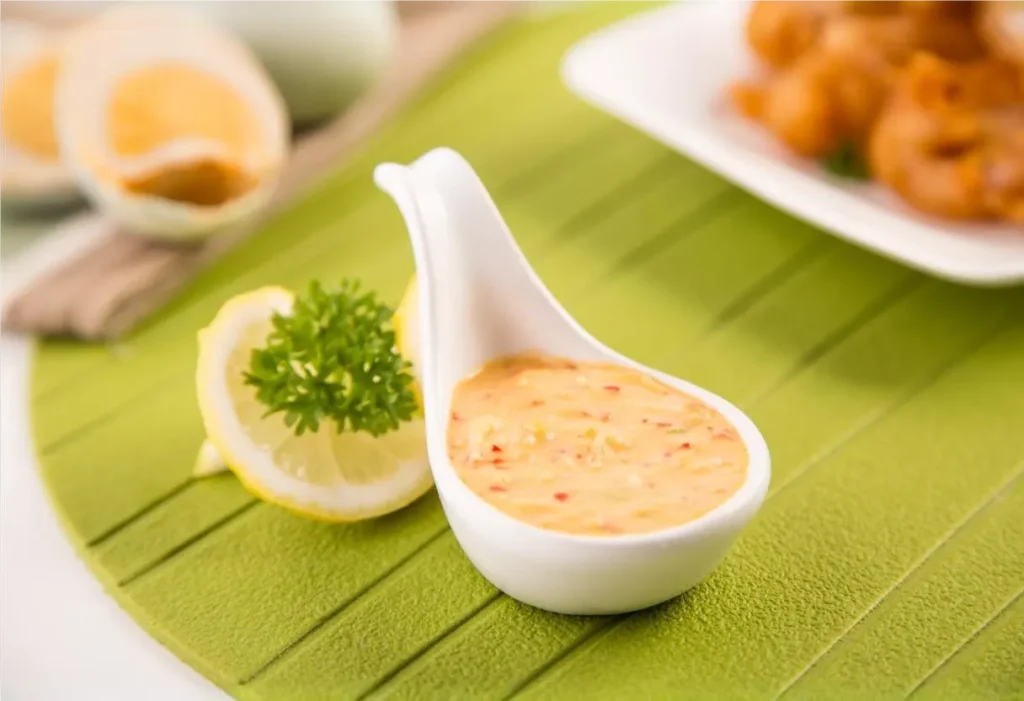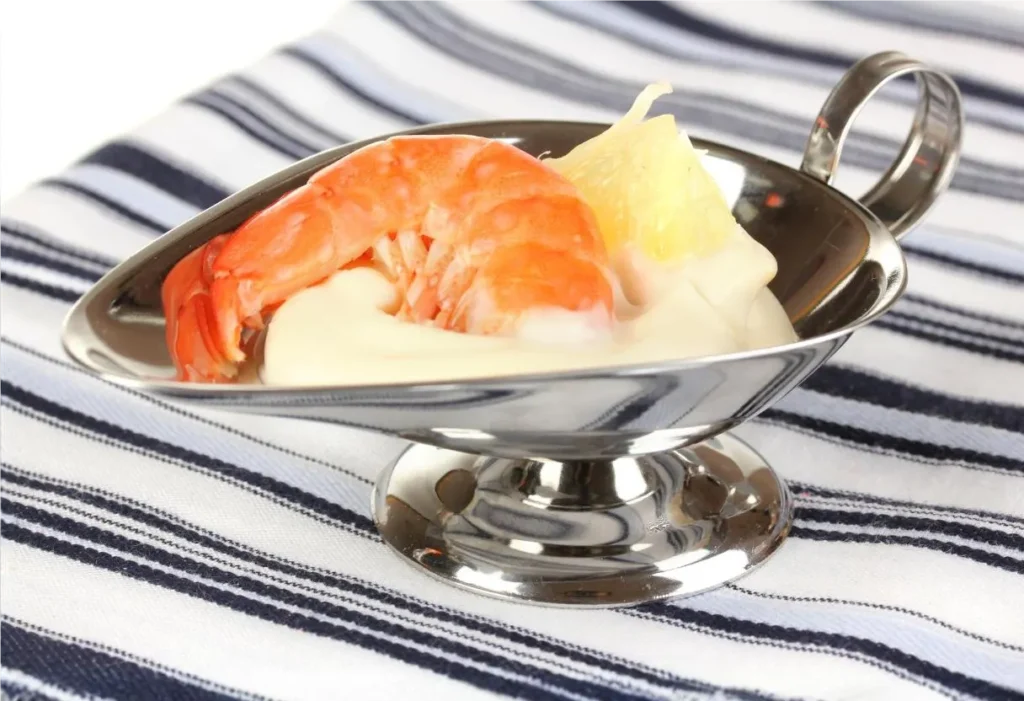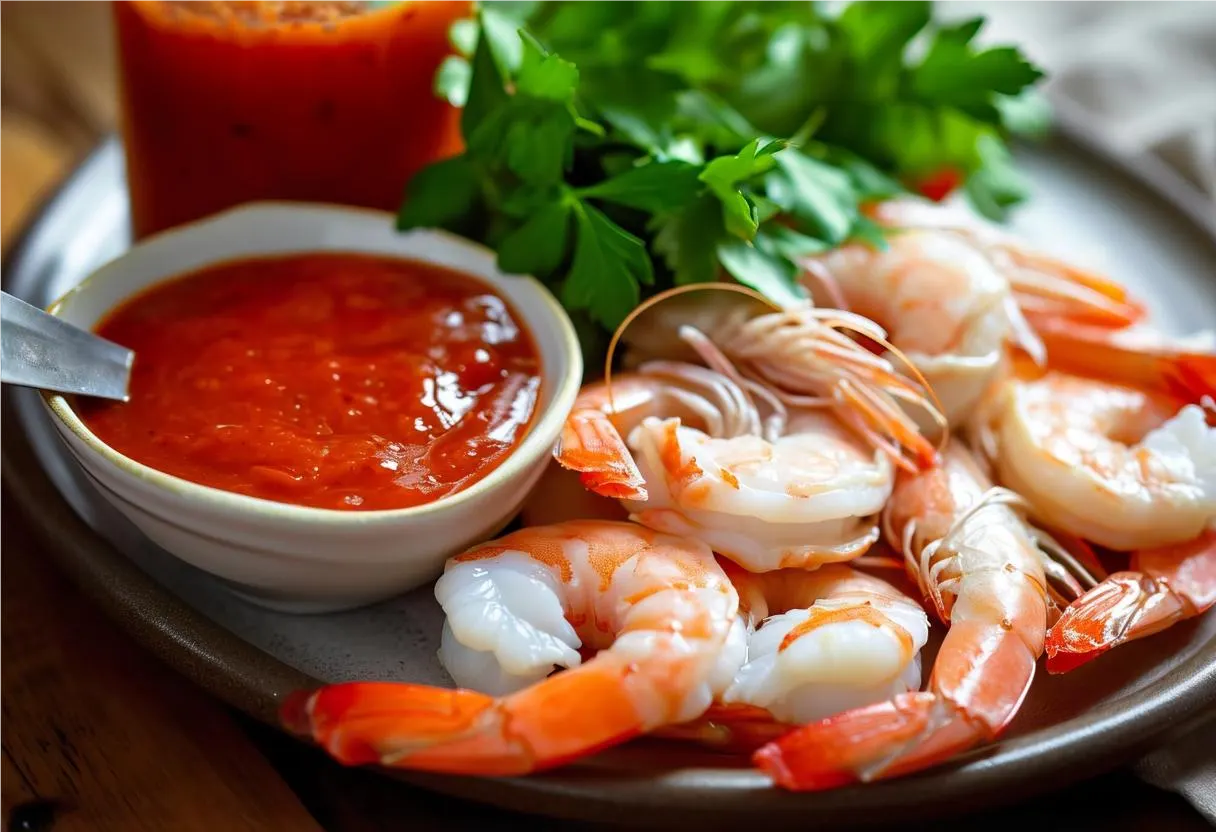Discover an easy seafood boil sauce recipe that elevates the flavors of shrimp, crab, and crawfish to create a feast everyone will love.
Introduction
Seafood boils, often associated with Southern coastal regions of the United States, are beloved gatherings where friends and family come together to enjoy fresh shellfish, vegetables, and savory spices. The crowning glory of these communal feasts is often the rich, buttery, and aromatic seafood boil sauce. While the tradition may have started with seasonings directly in the pot, today’s cooks frequently pour or dip a flavorful sauce over the seafood after cooking it, adding layers of complexity and charm.
In this comprehensive guide, we will explore every aspect of a perfect seafood boil sauce recipe. We will discuss its cultural roots, typical ingredients, preparation steps, and delightful serving suggestions. You will learn how to tailor the sauce to your own taste, adjust spiciness, and even add regional twists. In addition, we will share a detailed, step-by-step recipe with simple instructions so you can confidently recreate this culinary masterpiece at home. By the time you finish reading, you will know exactly how to craft a mouthwatering seafood boil sauce that turns an ordinary meal into a special occasion.
Table of Contents
Understanding the Tradition of Seafood Boils
Seafood boils have long been a cherished part of culinary life in coastal American communities. Historically, local fishermen would catch shrimp, crabs, and crawfish, and then gather with neighbors to boil these treasures alongside vegetables and spices. This communal event fostered a warm sense of togetherness and celebration.
Historical Roots and Regional Influences
For centuries, people along the Gulf Coast, in the Lowcountry of the Carolinas, and in the Chesapeake Bay area have prepared seafood boils with slightly different techniques and flavors. In Louisiana, for example, the Cajun and Creole traditions introduced a variety of spices, while in Maryland, Old Bay seasoning took center stage. Although the ingredients and spice blends might vary by region, the underlying principle remains consistent: fresh seafood, hearty vegetables, and bold flavors meant to be savored with friends and family.
The Evolution of the Sauce
Traditionally, most seasonings went straight into the boiling pot. However, modern cooks began experimenting with a flavorful sauce poured over the seafood after cooking. This approach allowed for more customization, ensuring each diner could adjust the heat, salt, and depth of flavor. As a result, the sauce became the star, acting as a medium to highlight the natural sweetness of shellfish and the comforting heartiness of vegetables like corn and potatoes.
Key Ingredients for a Classic Seafood Boil Sauce Recipe

Although recipes vary, a few staple ingredients form the backbone of a successful seafood boil sauce. Consider these components as building blocks you can adapt to your personal taste.
Buttery Base
Butter provides the sauce’s luxurious richness. Using high-quality butter or a dairy-free alternative ensures a smooth, velvety consistency. Butter also carries the sauce’s other flavors and helps them adhere to the shellfish.
Aromatics and Herbs
Garlic, onions, and shallots lend depth and aroma. Fresh parsley, thyme, and sometimes bay leaves or a sprinkle of chives brighten the final taste. In addition, you can incorporate ginger if you want a hint of spicy warmth.
Spices and Seasonings
A standard seafood boil sauce often relies on spices like smoked paprika, cayenne, black pepper, and, of course, iconic blends like Old Bay or Cajun seasoning. These seasonings provide complexity and a signature kick. If you cannot find these exact blends, you can customize your own mix of paprika, celery salt, mustard powder, and other spices.
Acids and Brighteners
A squeeze of fresh lemon or lime juice cuts through the richness and perks up the flavors. You can also add a dash of vinegar or a few drops of hot sauce to achieve the perfect balance. Adjust these acids slowly, tasting as you go.
Sweet and Savory Enhancers
Some cooks like a hint of sweetness from brown sugar or honey to balance spicy heat. Moreover, a splash of Worcestershire or fish sauce can provide savory depth. If you prefer a lighter profile, keep sweetness minimal and focus on herbs and spices.
Selecting the Perfect Seafood and Sides
Although the sauce is crucial, the seafood and sides you choose will influence how you season it. Therefore, selecting fresh and sustainable seafood is essential.
Best Shellfish for a Boil
Classic choices include shrimp, crawfish, crab, and sometimes lobster or mussels. For instance, tender shrimp pair beautifully with rich sauces. You can learn more about specific types of seafood and their flavor profiles on our tiger shrimp recipe page. When choosing shellfish, look for clear, briny smells and firm textures to ensure peak freshness.
Vegetables and Extras
Traditionally, a seafood boil includes corn on the cob, potatoes, and turkey or chicken sausage for added heft. However, you can experiment with other veggies like mushrooms or asparagus. The key is to pick sides that complement, rather than overpower, your sauce.
Balancing Flavors
If your sauce is bold and spicy, mild sides will let the complex flavors stand out. Conversely, if your sauce is mild, consider tangy or crisp vegetables. You could even explore pairing leftover sauce with pasta dishes, like in our shrimp spaghetti recipe, to create a second meal.
Step-by-Step: How to Make the Perfect Seafood Boil Sauce
Below is a detailed recipe to help you create an impressive seafood boil sauce. Follow these instructions carefully, and do not hesitate to adjust seasonings to your preference.
Equipment and Prep
- Heavy-bottomed saucepan
- Wooden spoon or silicone spatula
- Measuring cups and spoons
- Knife and cutting board
Ingredients (Serves About 4, Adjust as Needed)
- 1 cup (2 sticks) unsalted butter
- 4 cloves garlic, minced
- 1 small onion, finely diced
- 1 tablespoon smoked paprika
- 2 teaspoons Old Bay or Cajun seasoning
- 1 teaspoon cayenne pepper (adjust to taste)
- 1 teaspoon black pepper
- 1 teaspoon kosher salt (adjust to taste)
- 1 tablespoon fresh lemon juice
- 2 teaspoons apple cider vinegar or white vinegar
- 2 teaspoons Worcestershire sauce (optional)
- 1 tablespoon brown sugar (optional, for slight sweetness)
- 2 tablespoons chopped fresh parsley
(Feel free to add or substitute ingredients like ginger or chives for a unique twist.)
Instructions
- Melt the Butter:
Place the saucepan over medium-low heat. Add butter and let it melt slowly. Stir continuously to prevent browning. If you prefer clarified butter, skim off the milk solids for a smoother sauce. - Sauté the Aromatics:
Add the minced garlic and diced onion to the melted butter. Stir gently and cook for about 2–3 minutes, or until the onion becomes translucent. Take care not to burn the garlic. - Add the Spices:
Sprinkle in the smoked paprika, Old Bay or Cajun seasoning, cayenne pepper, black pepper, and salt. Stir well to distribute the spices evenly. Let the mixture cook for another 1–2 minutes so the flavors can bloom. - Incorporate Acids and Sweetness:
Add the lemon juice, vinegar, and Worcestershire sauce (if using). Stir in the brown sugar if you want a touch of sweetness. Taste frequently and adjust seasonings as needed. For extra heat, add more cayenne in small increments. - Simmer and Taste:
Let the sauce simmer gently for about 5 minutes. Taste and adjust seasoning. If it is too thick, add a tablespoon of water. If it needs more brightness, squeeze in additional lemon juice. - Finish with Fresh Herbs:
Stir in the chopped parsley right before serving. This brightens the sauce and adds a fresh, herbal note. - Serve Immediately:
Drizzle the sauce directly over cooked seafood, or present it in a bowl as a dipping sauce on the side. Serve hot for the best flavor and texture.
Nutritional Information (per 100g)
Below is an approximate nutritional breakdown of this seafood boil sauce recipe. Actual values may vary depending on exact ingredients and brands used.
| Nutrient | Amount per 100g |
|---|---|
| Calories | ~450 kcal |
| Total Fat | ~45 g |
| Saturated Fat | ~27 g |
| Cholesterol | ~120 mg |
| Sodium | ~600 mg |
| Total Carbohydrate | ~4 g |
| Sugars | ~1 g |
| Protein | ~2 g |
| Vitamin A | High |
| Vitamin C | Moderate |
(Note: This table is an approximation and should be used as a general guide.)
Flavor Variations and Regional Twists
You can modify this seafood boil sauce in countless ways. Therefore, do not hesitate to experiment until you find your signature blend.
Classic Southern Butter Garlic Sauce
For a smooth, buttery sauce, reduce the cayenne and add more garlic. Focus on Old Bay seasoning. This approach highlights the natural sweetness of shellfish.
Spicy Cajun-Style
Increase the cayenne and add dried thyme and oregano. This delivers the Louisiana flavor many seafood enthusiasts love. You could also serve this sauce with grilled fish, as suggested in our branzino recipe.
Herb-Forward Mediterranean Touch
Replace some butter with olive oil and incorporate basil and parsley. Add a little lemon zest for brightness. This lighter approach pairs well with roasted vegetables, as seen in our best vegetables for roasting guide.
Adjusting Heat and Spice Levels
Starting Mild
If you are sensitive to heat, start with mild paprika and minimal cayenne. Taste as you go, adding spice in tiny increments.
Balancing Spiciness
If the sauce becomes too hot, add more butter or a pinch of brown sugar. Lemon wedges on the side can also cool the palate. In addition, serve extra hot sauce at the table for those who crave an extra kick.
Presentation and Serving Suggestions

Casual Gatherings
Lay newspaper or butcher paper over a long table and pour out the seafood, corn, and potatoes. Offer the sauce in a communal bowl for dipping. Include plenty of napkins and encourage guests to dig in with their hands.
Elegant Platters
For a more refined presentation, arrange the cooked seafood neatly on a large platter. Drizzle the sauce over the top, and provide individual ramekins for extra dipping. Adding fresh herbs as a garnish makes the dish visually appealing.
Leftover Ideas
If you have extra sauce, drizzle it over grilled vegetables or use it to flavor simple side dishes. For example, stir it into our hibachi noodle recipe for a fusion twist.
Common Mistakes to Avoid
Over-Seasoning
It is easy to get carried away with salt and spice. Therefore, taste frequently and adjust gradually.
Burning the Butter or Garlic
Keep your heat moderate. Stir often to avoid scorching, which results in a bitter taste.
Skipping the Tasting Process
Do not wait until the end to taste your sauce. Regular tasting ensures you catch any imbalances early and can fix them before serving.
Storing and Reheating
Refrigeration
Store leftover sauce in an airtight container in the fridge for up to three days. Reheat gently on the stovetop over low heat, stirring often.
Freezing
You can freeze small portions for up to one month. Thaw in the refrigerator before reheating. This way, you can always have some on hand for a quick seafood meal.
FAQs – Your Seafood Boil Sauce Questions Answered
What is seafood boil sauce made of?
Seafood boil sauce typically includes butter, aromatics (such as garlic and onion), spices (like paprika and Old Bay), citrus juice for brightness, and optional sweeteners or umami boosters such as Worcestershire sauce. The exact blend varies, but the goal is always balanced, bold flavor.
What sauce is best for seafood?
The best sauce for seafood depends on your taste. A rich, buttery sauce with garlic and mild spices complements delicate shellfish. If you prefer bold flavors, try a spicy Cajun-style sauce. For a lighter taste, incorporate lemon zest and fresh herbs.
What are the ingredients in crab boil liquid?
Crab boil liquids often contain a mixture of water, salt, bay leaves, and spices like mustard seed, coriander, cayenne, and allspice. Some regions also add onion, lemon, or celery to the boiling water. You can find similar seasoning ideas in our guide to spiced broths and sauces.
What is crab boil seasoning made of?
Crab boil seasoning is usually a blend of spices such as paprika, cayenne, mustard seed, celery seed, and bay leaves. Some brands, like Old Bay, have their own proprietary mixes, delivering a signature flavor that many seafood lovers adore.
Conclusion
In conclusion, a perfect seafood boil sauce can transform a simple meal into a memorable event. By focusing on fresh ingredients, balanced spices, and thoughtful presentation, you can create a sauce that accentuates the natural flavors of seafood. Furthermore, with many variations and customization options, you can tailor it to your personal taste. Most importantly, remember to taste as you go, adjust for heat and salt levels, and have fun experimenting.
Once you master this seafood boil sauce recipe, you will have a go-to accompaniment for all your shellfish feasts. Consider exploring related recipes—like our best sauce for shrimp—to expand your culinary repertoire. Happy cooking, and enjoy the rich tradition of seafood boils in your own home.

